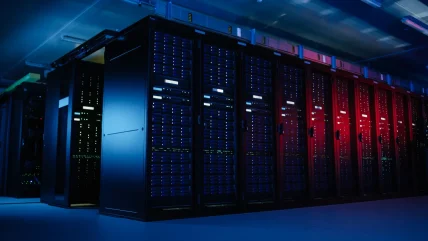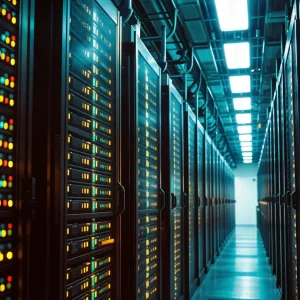
The global data centre industry is projected to emit 2.5bn metric tons of carbon dioxide-equivalent (CO2e) emissions by 2030, according to a report by Morgan Stanley.
This figure represents nearly 40% of the annual emissions of the US. The surge is primarily driven by the expansion of energy-intensive data centres by companies such as Alphabet’s Google, Microsoft, Meta, and Amazon, to support the increasing demands for artificial intelligence (AI) and cloud computing. Despite their pledges to reduce emissions by 2030, Morgan Stanley’s report indicates that significant challenges remain in achieving these goals.
Hyperscaler carbon emissions
While the growth of data centres will inevitably lead to higher greenhouse gas emissions, it also presents an opportunity to drive investments in clean energy, energy-efficient equipment, and sustainable materials.
The increase in emissions is expected to stimulate investments in decarbonisation technologies, including carbon capture, utilisation, and sequestration (CCUS) and carbon dioxide removal (CDR).
These technologies focus on capturing carbon emissions and removing carbon dioxide from the atmosphere.
Previous research by Morgan Stanley reveals that the rapid growth of generative AI is expected to drive a 70% annual increase in energy demand through 2027, largely due to data centre expansion.
However, Morgan Stanley analysts suggest that the positive impacts of generative AI on decarbonisation may outweigh the rise in emissions.
Meeting the escalating demand, the report argues, will require substantial investments in new generation and transmission infrastructure, given current constraints imposed on grid capacity by limited power lines, planning delays, and supply chain bottlenecks.
By 2027, the energy required for generative AI could match the total energy consumption of countries like Spain.
Measures taken to reduce data centre carbon emissions
To mitigate emissions from data centres, major tech companies like Google, Microsoft, Meta, and Amazon are employing various strategies focused on energy efficiency and sustainability. For its part, Google is working towards achieving 24/7 carbon-free energy for its data centres by investing in renewable energy projects, developing technologies such as on-site batteries, and harnessing advanced geothermal power plants.
The tech major is also optimising energy use with software and machine learning. In addition, it advocates for policies that support decarbonising electricity grids, aiming to align energy consumption with cleaner energy availability.
Microsoft, meanwhile, aims to be carbon-negative by 2030 by using renewable energy and enhancing energy efficiency. The company leverages AI and the Internet of things (IoT) to optimise data centre operations, invests in carbon removal technologies, and focuses on sustainable design to reduce overall emissions from its data centres.
Amazon plans to power its data centres entirely with renewable energy by 2025. The company is investing in global renewable energy projects and increasing the efficiency of its data centres through innovations like custom server designs and advanced cooling systems.
Even so, municipalities and local authorities remain anxious about the true commitment of hyperscaler cloud providers to decarbonisation and minimally drawing upon national power grids. In Ireland, for example, Google’s attempt to build a new 72,400m2 data centre near Dublin, Ireland was blocked by South Dublin County Council on the grounds that the hyperscaler’s plan failed to specify the power consumption once the centre becomes operational in 2027.
Written by Refna Tharayil






